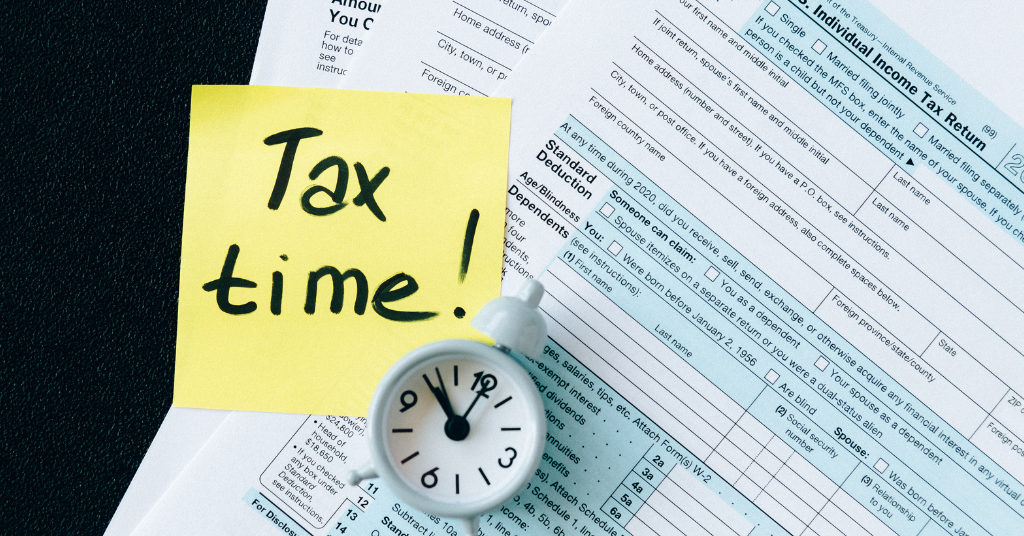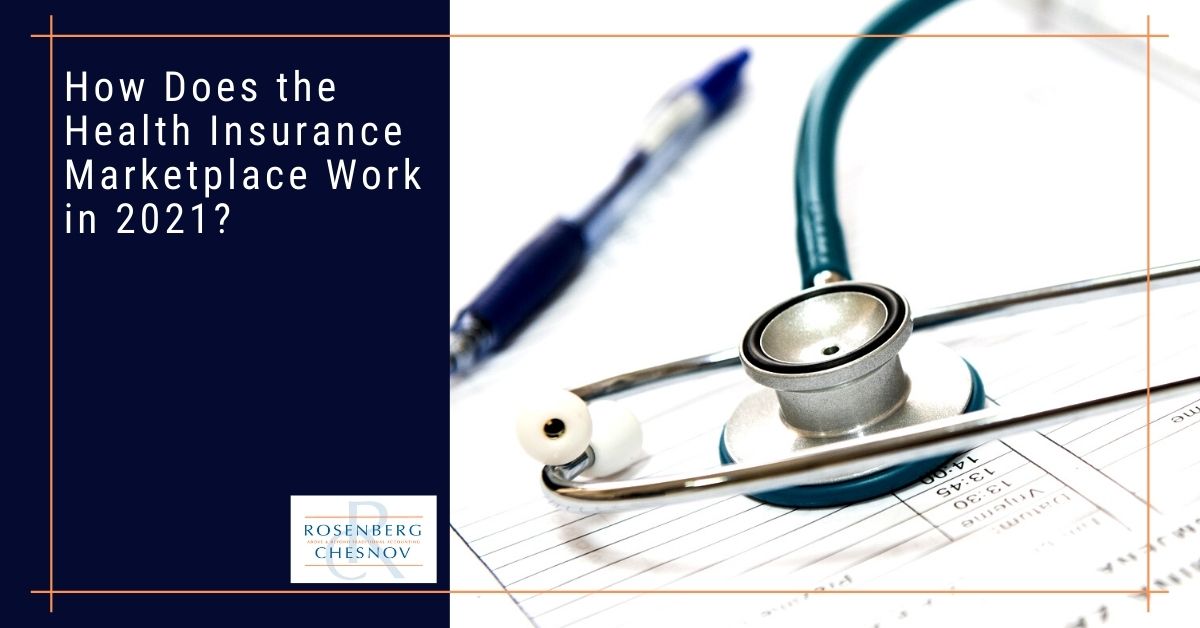

Maximize Your 2024 Refund: Tax Breaks You Might Be Missing
Category: Accounting
If you ever feel like the health insurance marketplace is challenging to understand, you’re not alone.
A 2019 Polygenius survey found that health insurance confusion is growing in America, with vast majorities of respondents uncertain about enrollment dates, the availability of financial aid, and whether there is still a tax penalty for going uninsured (there isn’t). 13.2% of those surveyed weren’t even sure if they had health insurance!
To make things even more complex, the implementation of state-level marketplaces has varied, the Affordable Care Act of 2010 has undergone several changes over the years, and, in March 2021, the American Rescue Plan shook things up again by increasing access and affordability.
This post will examine how the health insurance marketplace works, what’s new in 2021, and how you can start shopping and applying for coverage with confidence.


The health insurance marketplace, or health exchange, is a platform that helps individuals, families, and small businesses shop for and enroll in health insurance that fits their needs and budget. Shoppers can compare price, benefits, quality, and more between a range of healthcare plans from participating insurers. Furthermore, the marketplace offers subsidies and assistance with signing up for Medicaid for those who are eligible.
In most states, the federal government operates the health insurance marketplace. However, thirteen states choose to manage their own, and there are private marketplaces, as well.
All government-run exchanges are accessible through the website Healthcare.gov. Residents can also apply by phone, through an agent or broker, or with a paper application.
All plans in the marketplace must, at minimum, cover these ten essential health benefits:
Additionally, plans must also include birth control coverage and breastfeeding coverage. Other benefits, such as adult vision and dental coverage, are not required.
Specific services covered in each broad benefit category can vary based on your state’s requirements. For example, some states require insurers to cover additional services and procedures. When you compare plans in the marketplace, you will see the specific benefits each plan offers.
This year, the most expansive changes to the marketplace come courtesy of the American Rescue Plan (ARP).
Signed into federal law on March 11th, 2021, the ARP bolstered healthcare access and affordability. It did this by expanding financial assistance and premium tax credits and increasing eligibility for both. Data released by the Department of Health and Human Services showed that the new law cut premiums by 40% and substantially lowered out-of-pocket costs ahead of the recent August 15th deadline for special enrollment.
In the past, those with income more than four times the federal poverty level (FPL) were ineligible for marketplace subsidies. The American Rescue Plan changed this. Now, those with income up to 150% of the FPL are now eligible for plans with no premium and significantly reduced deductibles. The ARP also broadened premium subsidies for every income level.
Subsidies for unemployed people are also enhanced under the new law. There is also a provision releasing Americans who received taxable unemployment in 2020 from the obligation to pay back any tax credit overpayments. The IRS will return money to those who have already paid their taxes.
The ARP also allows anyone who received unemployment during 2021 and is not otherwise eligible for healthcare coverage to obtain the maximum marketplace subsidies.
Another provision further increases access to subsidies by reducing the percentage of income that individuals must pay for insurance to be eligible.
These changes to premium subsidies, however, are temporary and will expire after 2022.
To find out if you qualify for a tax credit to lower your monthly premium, you must apply for coverage. The amount of your credit will depend on the estimated income of your household in 2021.
If you are a current enrollee, the marketplace should have automatically applied any newly available savings to your enrollment, effective September 1st, 2021. It’s important to note, though, that this automatic update was based only on whatever information you had previously submitted.
With all of the preceding in mind, shopping and applying for coverage may still be intimidating. If you are unsure how to shop and apply for plans in the marketplace or even whether or not you are eligible to do so, read on.
For individuals, the answer to this question is simple. To be eligible to enroll in coverage through the marketplace for yourself or your family, you must live in the United States, be a U.S. citizen or national (or be lawfully present), and you can’t be incarcerated. One stipulation: if you have Medicare coverage, you cannot use the marketplace to purchase a health or dental plan.
If you operate a small business (generally with less than 50 employees), you may also be able to find coverage through the marketplace. By enrolling in the Small Business Health Options Program (SHOP), you will be able to work with a registered agent or broker to find a plan.
On the other hand, if you run your own business but have no employees or are self-employed, you won’t be eligible for group coverage. In that case, you would shop through the individual marketplace.
You can enroll in or change a marketplace plan during a yearly period called Open Enrollment.
Generally, the open enrollment period runs from November 1st through December 15th. Some states, however, have longer open enrollment periods that start sooner or end later.
You can only sign up for coverage outside of this period if you qualify for a Special Enrollment Period. These periods are for those who experience certain life events. You may be eligible if you or anyone in your household has, in the last 60 days:
Open enrollment for 2022 runs Monday, November 1st, 2021 through Saturday, January 15th, 2022. You must enroll by December 15th, 2021, for coverage to begin January 1st, 2022.
To begin the process, visit Healthcare.gov. As previously discussed, most states do not have their own marketplace and operate through this website. However, if you live in a state with its own exchange, Healthcare.gov will redirect you to the appropriate website based on your zip code.
If you cannot apply through Healthcare.gov, you may find and contact an agent, broker, or assister to help you. You can also apply through the website of an approved enrollment partner, such as an insurance company or online health insurance seller. To enroll by phone, you can contact the marketplace call center at 1-800-318-2596 (TTY 1-855-889-4325).
Finally, if you wish to apply by mail, you can print an application from Healthcare.gov and send it in. You will receive eligibility results in the mail within two weeks.
If you are a client and would like to book a consultation, call us at +1 (212) 382-3939 or contact us here to set up a time.
If you aren’t a client, why not? We can take care of your accounting, bookkeeping, tax, and CFO needs so that you don’t have to worry about any of them. Interested? Contact us here to set up a no-obligation consultation.


Category: Accounting


Category: Accounting


Category: Accounting
Send us a message and we will contact you as soon as possible.
Send us a message and we will contact you as soon as possible.
Jeff Coyle, CPA, Partner of Rosenberg Chesnov, has been with the firm since 2015. He joined the firm after 20 years of business and accounting experience where he learned the value of accurate reporting, using financial information as a basis for good business decisions and the importance of accounting for management.
He is a diligent financial professional, able to manage the details and turn them into relevant business leading information. He has a strong financial background in construction, technology, consulting services and risk management. He also knows what it takes to create organizations having built teams, grown companies and designed processes for financial analysis and reporting.
His business experience includes:
Creating and preparing financial reporting, budgeting and forecasting.
Planning and preparation of GAAP and other basis financial statements.
Providing insight on financial results and providing advice based on those results.
Jeff also has a long history of helping individuals manage their taxes and plan their finances including:
Income tax planning and strategy.
Filing quarterly and annual taxes.
Audit support.
General financial and planning advice.
Prior to joining the firm in 2015, Jeff was in the private sector where he held senior financial and management positions including Controller and Chief Financial Officer. He has experience across industries, including construction, technology and professional services which gives him a deep understanding of business.
Jeff graduated from Montclair State University, he is a CPA and member of the American Institute of Certified Public Accountants, New York State Society of Certified Public Accountants and New Jersey State Society of Public Accountants.
Jody H. Chesnov, CPA, Managing Partner of Rosenberg Chesnov, has been with the firm since 2004. After a career of public accounting and general management, Jody knows the value of good financials. Clarity, decision making, and strategy all start with the facts – Jody has been revealing the facts and turning them into good business results for more than three decades.
He takes a pragmatic approach to accounting, finance and business. His work has supported many companies on their path to growth, including helping them find investors, manage scaling and overcome hurdles. His experience and passion for business reach beyond accounting and he helps businesses focus on what the numbers mean organizationally, operationally and financially.
He has a particular expertise in early-stage growth companies. His strengths lie in cutting through the noise to come up with useful, out of the box, solutions that support clients in building their businesses and realizing their larger visions.
Prior to joining the firm in 2004, Jody was in the private sector where he held senior financial and management positions including General Manager, Chief Financial Officer and Controller. He has experience across industries, which gives him a deep understanding of business.
Jody graduated with a BBA in Accounting from Baruch College, he is a CPA and member of the American Institute of Certified Public Accountants and New York State Society of Certified Public Accountants.
In addition to delivering above and beyond accounting results, Jody is a member of the NYSCPA’s Emerging Tech Entrepreneurial Committee (ETEC), Private Equity and Venture Capital Committee and Family Office Committee.
He is an angel investor through the Westchester Angels, and has served as an advisor for many startup companies and as a mentor through the Founders Institute.